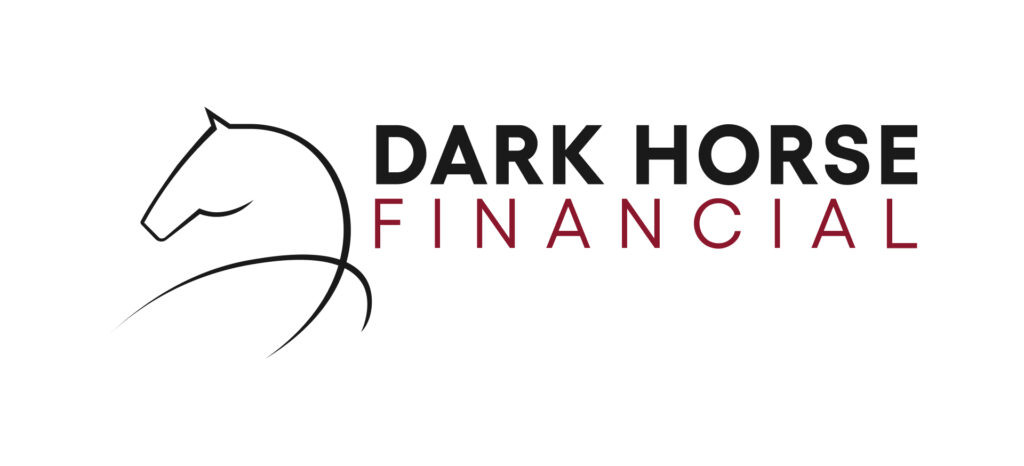Key Takeaways
- A business overdraft is a revolving credit facility linked to your transaction account, enabling you to access funds above your available balance.
- Interest is only charged on the amount of funds you borrow, and the limit resets once you repay what you owe.
- Unsecured overdraft options are particularly attractive due to the speed of approval and the non-requirement of assets as security.
- Financial planners benefit from overdrafts by improving cash flow, covering operational expenses, and supporting strategic growth without needing to secure long-term loans.
- Eligibility for a business overdraft is generally demonstrated by revenue through business bank accounts (for unsecured options).
- Choosing the right overdraft means assessing your practice’s cash flow and determining your needed credit limit. To secure the right overdraft, fill out our online form.
For those in financial planning, success isn’t just about delivering sound advice to clients. It’s also about managing your practice’s cash flow and working capital. For financial planners, cash flow can be unpredictable, particularly when dealing with fee-for-service billing or irregular client payments. This variability can place pressure on day-to-day operations, especially since ongoing expenses such as staff wages, compliance costs, and rent don’t wait for income to arrive.
Tailored business overdraft solutions for financial planners offer a flexible, accessible way to manage short-term funding needs and maintain liquidity. Understanding how business overdrafts work and how they can be used effectively is important for any financial planning professional.
What is a Business Overdraft for Financial Planners?
A business overdraft is a revolving line of credit linked to a business transaction account. It allows businesses to withdraw more than the available balance, up to an approved limit, providing immediate access to funds. Interest is charged only on the amount drawn, not the entire limit.
Key Features:
- Revolving Credit: Funds are available as needed, with the ability to repay and redraw at any time. Once you repay the outstanding balance, the limit resets.
- Interest on Usage: Interest is charged only on the drawn amount.
- Flexible Repayments: No fixed repayment schedule; repayments can be made as funds become available.
- Secured or Unsecured Options: Depending on the lender and the amount, overdrafts can be secured against assets or unsecured.
Are Overdrafts Suitable for Financial Planning Practices?
Overdrafts are well-suited for financial planning practices due to their flexibility and quick access to funds. Unlike traditional business loans that come with fixed repayment schedules, business overdrafts provide a responsive, revolving credit facility that can be accessed when needed, then paid down and reused as required. This makes them ideal for a profession where income can be irregular and largely tied to client invoicing cycles, fee-for-service billing, or commission payments.
Additionally, overdrafts can provide a critical buffer for businesses during the growth phase. For example, when hiring additional staff, expanding services, or investing in marketing, the need for cash is often greater than incoming revenue. A business overdraft can help bridge that gap, allowing planners to grow confidently and sustainably.

How Financial Planners Use Business Overdrafts
Here’s how financial planners commonly use overdraft facilities in practical, strategic ways:
1. Bridging Irregular Cash Flow
Cash flow can be inconsistent in financial planning, especially when income depends on client invoicing or commission payments. A business overdraft provides a reliable financial buffer during slower months, allowing practices to cover essential expenses like office rent, utilities, and salaries without dipping into savings or delaying payments.
2. Covering Operating Expenses
From operating expenses to license renewals and continuing professional development (CPD) requirements, financial planning businesses face a host of regular costs. An overdraft allows planners to cover these short-term expenses easily, especially when revenue timing doesn’t perfectly align with outgoings.
3. Funding Growth and Expansion
Growing a practice often requires upfront investment, whether hiring additional staff, upgrading IT infrastructure, or expanding your business. An overdraft provides immediate access to working capital to fund these initiatives without committing to a long-term loan, supporting scalable growth and innovation.
4. Managing Client Payment Delays
As more planners move toward fee-for-service billing models, waiting for client payments can create temporary cash gaps. Overdraft facilities can bridge the time between issuing an invoice and receiving payment, ensuring the business can continue operating efficiently without financial strain..
5. Handling Seasonal Slowdowns
Financial planning is often cyclical, with client engagement and new business typically slowing over summer or during tax off-seasons. An overdraft can help maintain consistent cash flow during these quieter periods, so planners can retain staff, fund marketing, or even take time off without worrying about liquidity.
6. Going After Opportunities
Opportunities sometimes require fast action. Opportunities can come in the form of discounted office equipment, a last-minute industry conference, or a window for advertising. With a business overdraft in place, financial planners have the flexibility to act quickly without waiting for external funding approvals or draining business reserves.
How Can Financial Planners Benefit From a Business Overdraft?
Utilising a business overdraft offers several advantages:
- Improved Cash Flow Management: Ensures smooth operations even during lean periods.
- Flexibility: Access funds as needed without the commitment of a term loan.
- Cost-Effective: Interest is only paid on the overdrawn amount, potentially reducing costs compared to other financing options.
- Quick Access to Funds: Funds are readily available, facilitating prompt action when required.

Unsecured Overdrafts for Financial Planners
Unsecured business overdrafts are particularly appealing to financial planners who may not wish to pledge assets as security. These overdrafts are granted based on the business’s capacity to service a line of credit.
Advantages:
- No Asset Required: There’s no need to pledge personal or business assets.
- Quick Approval: Streamlined application processes approvals and funding within a day.
- Flexibility: Utilise funds as needed without the constraints of secured lending.
Considerations:
- Interest Rates: Unsecured overdrafts may have higher interest rates compared to secured options.
- Not Available to Startups: Unsecured overdrafts with favourable rates and terms are generally not available to businesses that have been operating for less than 1-2 years.
Can Financial Advisors Get Unsecured Business Overdrafts?
Yes, financial advisors can qualify for unsecured business overdraftse. An unsecured overdraft doesn’t require the business to pledge assets such as property or equipment, which can be a significant advantage for planners operating lean or without substantial capital assets.
These unsecured facilities are generally available for limits up to $350,000, depending on the provider, and approval can be quicker due to streamlined application processes.
However, it’s important to note that interest rates on unsecured overdrafts tend to be higher than their secured counterparts due to the increased risk for the lender.
How Do Financial Planners Qualify for Overdraft Facilities?
To access business overdraft solutions, financial planners will need to meet specific criteria set by the lender. These vary depending on whether the overdraft is secured or unsecured and the financial institution’s lending policies. However, general qualification criteria include:
1. Business Registration
Lenders will require businesses to hold an Australian Business Number (ABN) and be registered for Goods and Services Tax (GST).
2. Established Business Presence (For Unsecured Options)
For unsecured overdrafts, lenders usually provide favourable terms and rates to businesses that have been operating for at least 6 to 12 months. Start-ups may have a better chance of securing an overdraft if they provide security.
3. Capacity to Repay
Capacity to repay an overdraft is assessed by a read only view of business bank account statements. Lenders will pay particular attention to the revenue trend over the last 3 months and the average cash balance to ensure there is sufficient liquidity to meet repayments.

Business Overdraft Solutions for Financial Planners: Finding the Right Fit
Choosing the right business overdraft solution depends on several factors, including the size of your practice, your financial health, and your business goals. Here are a few key considerations when evaluating options:
1. Credit Limit
Assess your cash flow cycles and determine how much of a buffer you require.
2. Interest Rates and Fees
Contact our team at Dark Horse Financial to secure the best interest rates for your overdraft. We’ll compare interest rates on your behalf, and we’ll take into account any monthly account-keeping fees or establishment fees.
3. Lender Experience with Financial Services
We’ll also help you choose a lender that understands the financial planning industry and its revenue model. Providers with experience in financial services loans and understand payments from an aggregator do not represent a concentration risk and are more likely to offer tailored terms that align with your business model.
Financial Planning Finance in Australia: Other Options
While business overdrafts are beneficial, financial planners may also consider other financial services loans to meet their funding needs:
- Secured Term Loans: Provide lump-sum amounts for specific purposes, such as purchasing equipment or commercial property. These loans are secured against assets and can have better interest rates than unsecured loans.
- Unsecured Term Loans: These loans don’t require assets as security and can be approved much quicker than secured loans. These provide funds that can be used for any business purpose.
Combining a business overdraft with other financial services loans can provide a comprehensive financial strategy for financial planners.
Final Thoughts
For financial planners, a business overdraft can serve as a smart, strategic tool to ensure smooth operations, seize growth opportunities, and manage income with confidence.
Whether you’re a solo practitioner or running a multi-advisor firm, business overdrafts for financial planners in Australia are a proven way to safeguard liquidity, improve resilience, and support long-term success. Before committing, consult with a specialist in planner funding or financial services loans like Dark Horse Financial to tailor a solution that meets the specific needs of your practice.
Secure an Overdraft for Your Business
If you're interested in exploring business overdraft solutions for your financial planning practice, Dark Horse Financial offers guidance and access to competitive finance options designed specifically for Australian financial advisors.
Disclaimer: Loans and the benefits of loan products are available to approved applicants only. Information on this page is general in nature, it does not take into account your personal situation. This information is not intended to replace professional advice and should not be relied upon for any reason. You should always seek professional advice for finance, tax and accounting matters before making a decision or taking any action.




